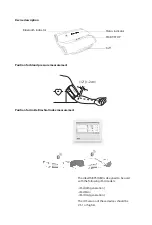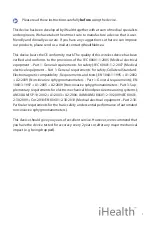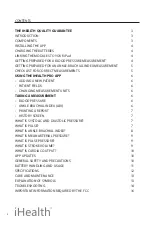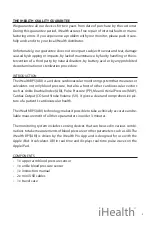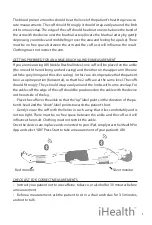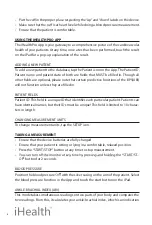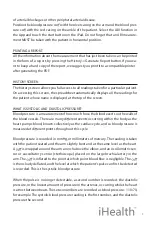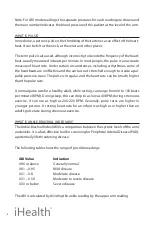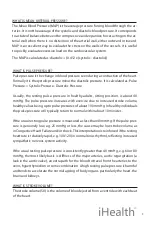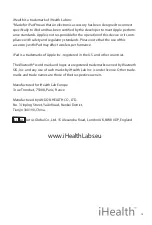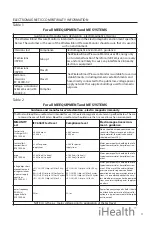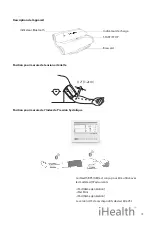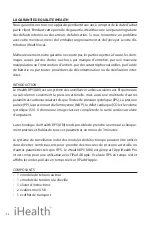
PRINTING A REPORT
All the information about the measurement that has just been taken can be printed
-
a
w
u
o
y
f
I .
n
o
t
t
u
b
t
r
o
p
e
R
e
t
a
r
e
n
e
>
-
y
r
o
t
s
i
H
G
e
h
t
g
n
i
s
s
e
r
p
y
b
,
t
r
o
p
e
r
a
f
o
m
r
o
f
e
h
t
n
i
nt to keep a hard copy of the report, we suggest you print it to a compatible printer
after generating the PDF.
HISTORY SCREEN
The history screen allows you full access to all readings taken for a particular patient.
On accessing this screen, the spreadsheet automatically displays all the readings for
the patient whose name is displayed at the top of the screen.
WHAT IS SYSTOLIC AND DIASTOLIC PRESSURE?
Blood pressure is a measurement of how much force the blood exerts on the walls of
the blood vessels. There are many di erent events occurring within the body as the
heart pumps blood, known collectively as the cardiac cycle, and so blood pressure is
measured at di erent points throughout this cycle.
Blood pressure is recorded in mmHg, or millimeters of mercury. The reading is taken
with the patient seated and the arm slightly bent and at the same level as the heart.
A
is wrapped around the arm an inch above the elbow, and an oscillometric sen-
sor or auscultatory sensor (stethoscope) placed on the large brachial artery in the
arm. The
is inflated to the point at which point blood flow is negligible. The
is then slowly deflated, and the level at which the patient's pulse can first be detected
is recorded. This is the systolic blood pressure.
When the pulse is no longer detectable, a second number is recorded: the diastolic
pressure, or the lowest amount of pressure in the arteries, occurring while the heart
is at rest between beats. These two numbers are recorded as blood pressure - 110/70,
for example. The systolic blood pressure reading is the first number, and the diastolic
pressure the second.
of arterial blockages or other peripheral arterial disease.
Position the blood pressure cu with the silver casing on the arm and the blood pres-
sure cu with the red casing on the ankle of the patient. Select the ABI function in
the App and touch the start button on the iPad. Do not forget that an ABI measure-
ment MUST be taken with the patient in horizontal position.
7
Summary of Contents for BP5
Page 37: ...35...


